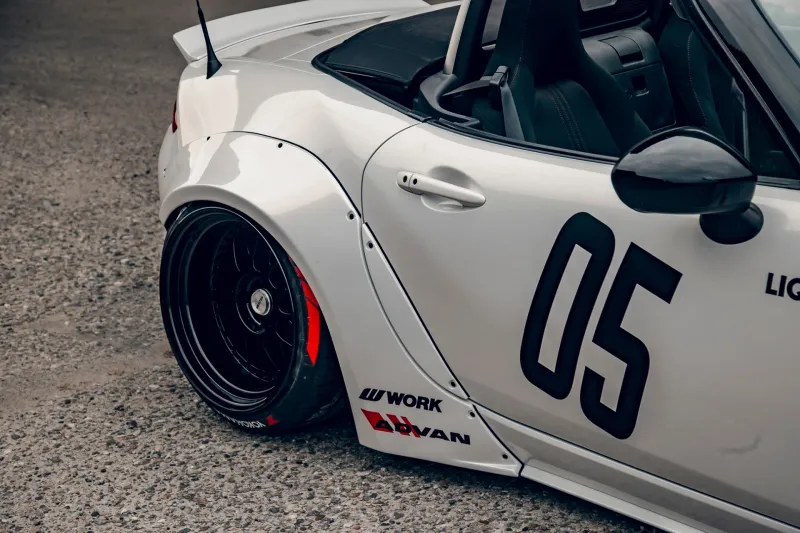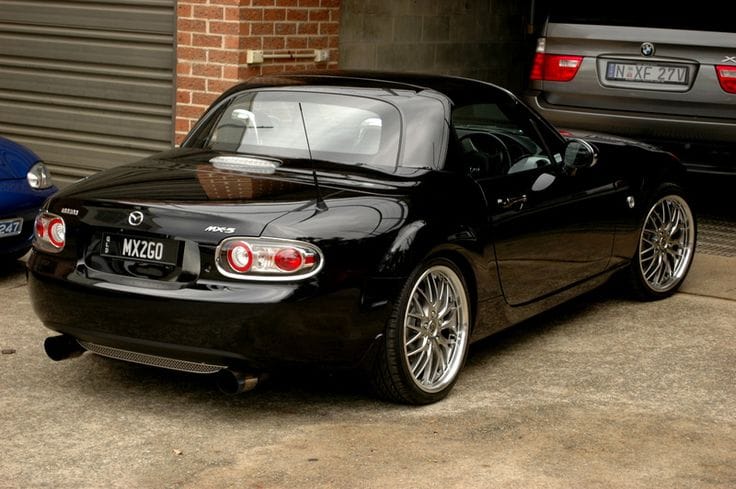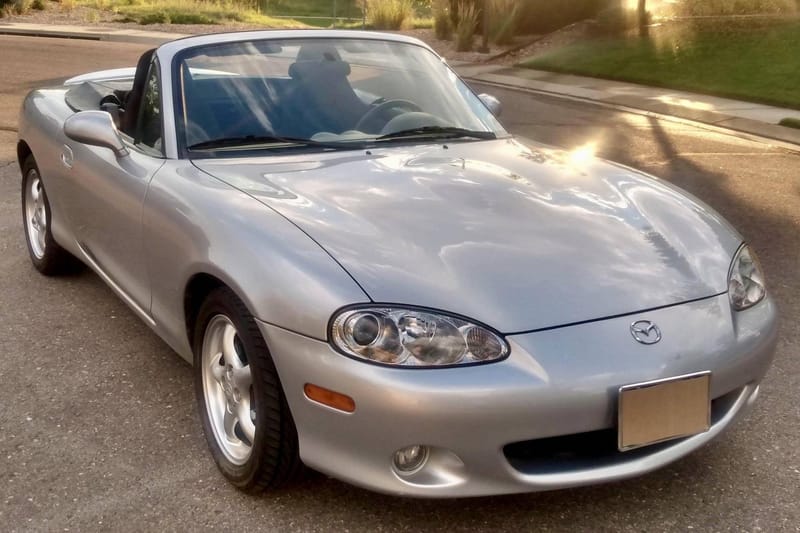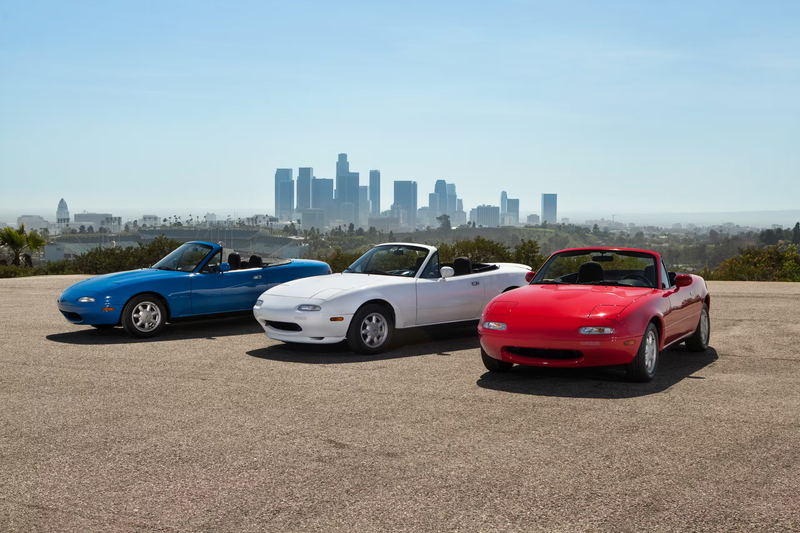Why the NB Miata Is the Best for Modding
With a massive aftermarket, you’ll find proven options for power (turbo/supercharger kits), handling (coilovers, braces, alignment hardware), and braking. This guide lays out what to service first, the best wheel/tire combos, driveline upgrades, reliability fixes.
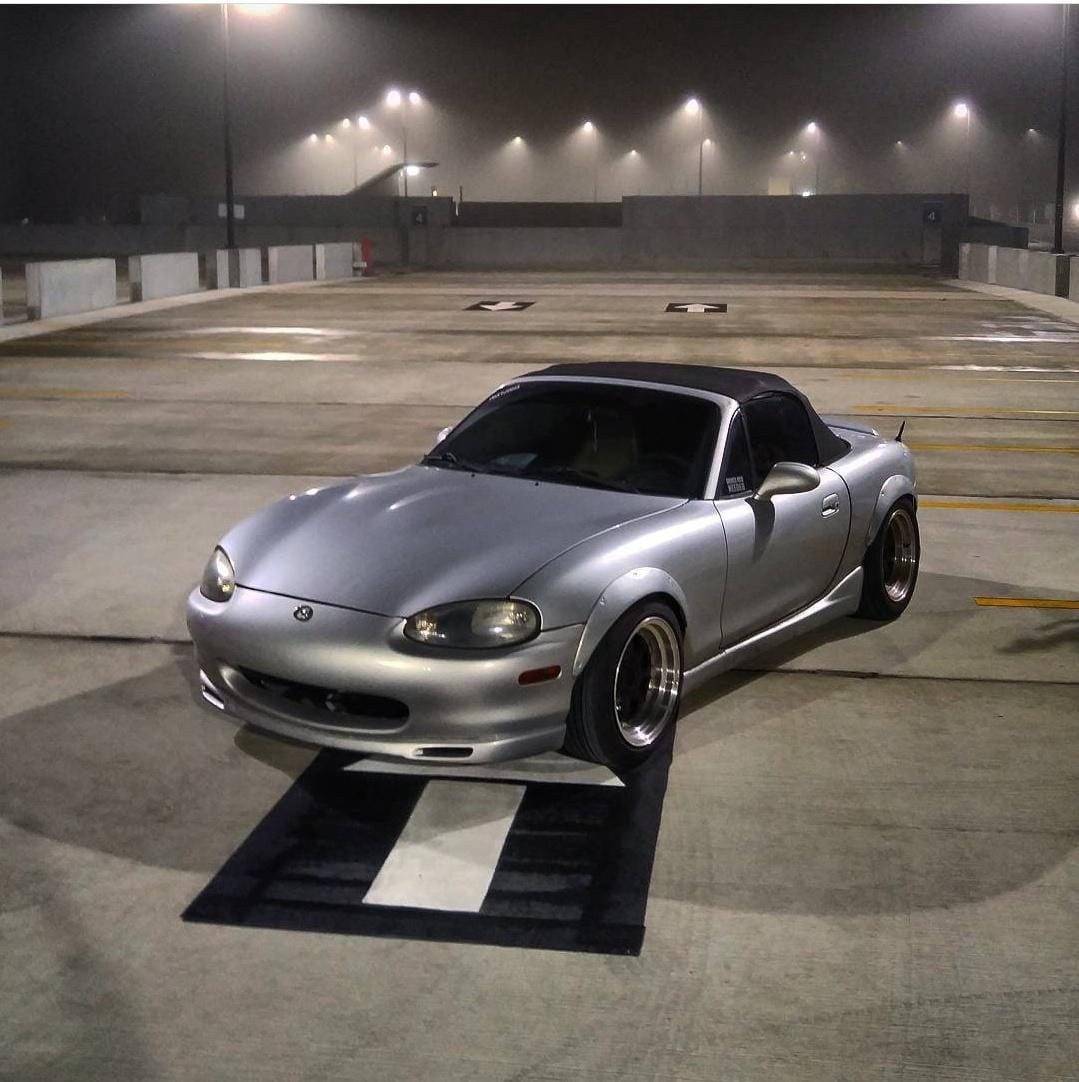
The 1999–2005 NB Miata sits right in the modder sweet spot. It’s modern enough that tuning is straightforward and reliable, but still simple and mechanical so you can wrench on it at home. On top of that, the aftermarket is absurdly deep, everything from full turbo kits and superchargers to purpose-built coilovers, braces, and alignment hardware has been tested to death on this chassis. This guide gives you a practical, parts-level roadmap you can act on: how to buy smart, what to service first, where the real power comes from, how to make it handle and stop, what wheel/tire setups actually work, the driveline bits that make the car feel fast everywhere, common reliability upgrades, swap options, and a few ready-to-copy build recipes at the end.
Choosing your NB
There are two main flavors. NB1 (1999–2000) runs the BP-4W 1.8, while the facelifted NB2 (2001–2005) brings the BP-Z3 with variable valve timing (VVT) on the intake side. VVT matters because it widens the torque curve and gives tuners another lever to pull, especially if you go standalone ECU later. Then there’s the 2004–2005 Mazdaspeed MX-5, a factory-turbo NB that’s useful not just because it’s quick out of the box, but because it proves how nicely the platform takes boost. Transmission-wise, you’ll see both 5-speeds and the Aisin AZ6 6-speed; the Mazdaspeed’s 6MT pairs close gearing with a 4.10 final, which is handy context when you talk cruising RPM and track gearing later.

What to Look For First
Rust is the big one. On NBs, pay close attention to rear sills/rockers and the front frame rails. If those areas are crusty, budget for bodywork before you think about coilovers or a turbo, structure beats speed every time. Once you’ve found a solid shell, baseline it ruthlessly: timing belt and water pump, a fresh thermostat and coolant, new brake fluid, new clutch hydraulics if the pedal feels inconsistent, and fresh diff and transmission fluids. This is boring work that prevents 90% of “my Miata runs hot / grinds / feels weird” forum threads and makes every mod afterward pay off.

Choosing Your Path
On stock or lightly-modified NBs, intakes alone won’t move the needle much. The real gains show up when a good header meets proper ECU control. A quality 4-1 or 4-2-1 header, a well-mannered midpipe and cat-back, and a tune that optimizes fueling and ignition (and VVT on 2001–2005 cars) can make the car feel meaningfully stronger without ruining drivability. If you’re even vaguely considering boost later, buy the right ECU once: a plug-in standalone that can run fueling, ignition, and VVT. It’s the foundation for everything else.
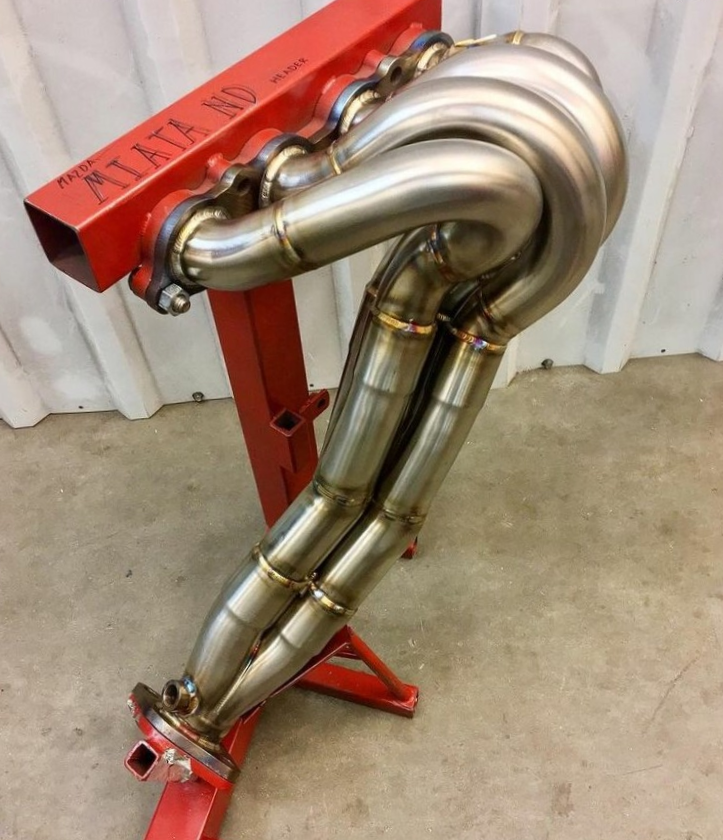
Turbocharging (The Easy 200–230whp)
If you want a night-and-day difference with street manners, a proven NB-specific turbo kit is the straight path to ~200–230 whp on conservative pump-gas boost. The platform absolutely loves a small, responsive turbo, and you’ll keep OEM-like drivability if the fueling and timing are dialed in. Prefer linear shove? A Rotrex-based supercharger kit delivers a fat midrange and a super clean throttle feel, perfect for a dual-duty daily that sees back roads. Mazdaspeed owners have the laziest path of all: even a downpipe and exhaust wake the car up noticeably, and a gentle tune cleans up the torque curve. Whatever your flavor of boost, plan for cooling (radiator + thermostatic oil cooler) once you start leaning on the car.

Handling: Coilovers, Bars, Alignment

Good coilovers are the single best “feel” mod on an NB. Look for kits with real travel, sensible spring rates for your use case (street/HPDE/time-attack), and valving that keeps the car composed over rough pavement instead of pogoing. Don’t slam the car, Miatas reward bump travel. Ride height should protect geometry and frame rails, not Instagram. Sway bars are your balance tool, not a replacement for springs and damping: a matched front/rear set with adjustable holes lets you trim understeer/oversteer without wrecking ride quality. For alignment, a proven starting point is healthy negative camber up front (around the mid-twos), a bit less in the rear (high-ones to low-twos), zero or a hair of toe-out in front for turn-in, and neutral to slight toe-in in the rear for stability. That spec drives great on the road and shines at an autocross or novice HPDE.
Chassis Bracing & Roll Protection
NBs respond well to underbody stiffening. Frame-rail reinforcements make the shell feel more of a piece, sharpening steering and making the suspension do the work instead of the body. Add a “butterfly” center brace if you want the full box closed, but keep an eye on ground clearance and weight. If you plan real track time, or just want peace of mind, fit a proper roll bar. Hardtop fit and event rules (harness bar, diagonal, height relative to helmet) matter, so choose a model that’s known to pass tech and still plays nicely with your roof and seats.

Brakes
You don’t need giant calipers to stop hard and repeatedly in an NB. Start by choosing the right pad for the job, civil street compound for daily use, then swap to an actual track compound for HPDE days. Stainless braided lines improve pedal feel, and high-temp fluid (think RBF 600-class) keeps the pedal from going long. Later-NB “Sport” brakes and Mazdaspeed hardware are already larger; paired with the right pads and fluid, they’ll do a surprising amount of work before a big-brake kit makes sense.
Wheels & Tires
The easy, proven setup is a 15×8 wheel with a 205/50R15 200-treadwear tire. It’s light, fast, and drama-free on stock fenders with a good alignment. Want more grip? A 15×9 with 225/45R15 is magic on track but usually needs more negative camber and sometimes a fender roll, so set expectations. Because the NB is light and runs true double wishbones, it rewards lighter wheels and better tires more than most cars, you’ll feel the difference in steering, braking, and the way the chassis settles mid-corner.

Drivetrain & Gearing (Make It Feel Fast Everywhere)
The 6-speed tightens up the first five gears, and in Mazdaspeed form pairs with a short 4.10 final and an overdrive 6th. That combination feels lively around town and on track, though highway revs can be higher than you’d expect. Final drive matters as much as the gearbox for cruise RPM, so keep that in mind if you’re planning long freeway miles. Many NBs came with a Torsen-type limited-slip; never assume, check the axle code, build sheet, or the hardware itself. A healthy LSD plus the alignment above is a huge part of why these cars punch above their power.
Reliability & Track Prep
Heat is the enemy. If you’re adding boost or planning open-track sessions, a quality aluminum radiator and a thermostatic oil cooler move from “nice to have” to “must have.” As a sanity check, keep coolant temps around the low-200s °F and oil under the mid-260s °F during sustained hard use. Front hubs take a beating on sticky 200-tw tires; if you’re doing lots of HPDE or endurance events, upgrade to reinforced/competition hubs before you learn about them the hard way. Shorten your fluid intervals (brake, diff, trans), and add a between-event checklist: wheel torque, suspension hardware torque, pad thickness, and a quick look for leaks.
Swap Ecosystem (Why the NB Keeps Getting Chosen)
If you want OEM-like manners with big power headroom, the K-series route (K20/K24) has matured into a remarkably complete package, subframe, mounts, oiling solutions, intake/header, and the ECU options to run it cleanly. If you’re chasing V8 thunder, NA/NB-specific subframes and driveline kits exist to make an LS-powered roadster more than a meme, but you’ll need to build the rest of the car (cooling, fuel, brakes, safety) to match. And if your endgame is a tube or exoskeleton car, NA/NB donors are still the default for Exocets thanks to cost, availability, and documentation.

